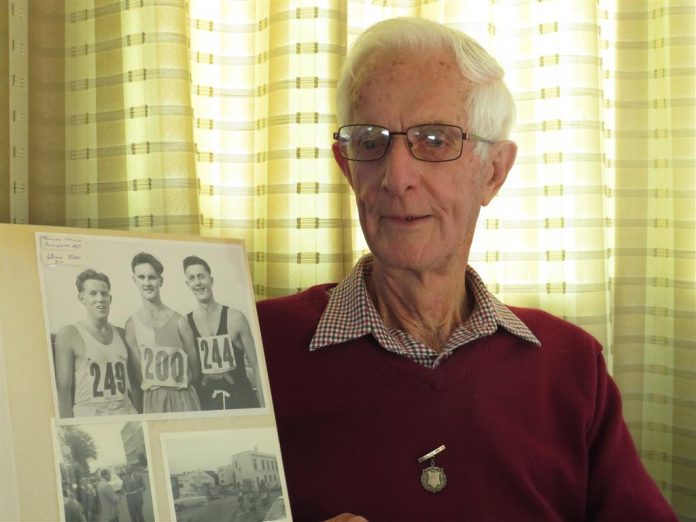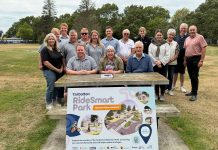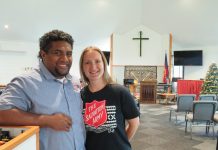Gordon Clinton started running in his youth.
He lived at Barrhill and did it for fun, then in his late-teens joined the Ashburton Harriers Club.
It was to be a lifelong association, which still continues today.
Gordon, 89, may have swapped his running sneakers for golf shoes but he is still a avid supporter of the district’s runners, and remains patron of the club.
He also helps out where needed including race marshall or timekeeping ‘‘whatever they want me to do.’’
He has been a member of the Ashburton Harriers Club, now Run and Walk Ashburton for 70 years.
Gordon said the club was first proposed by an interested group of runners in 1949.
However he was not a member in those early years.
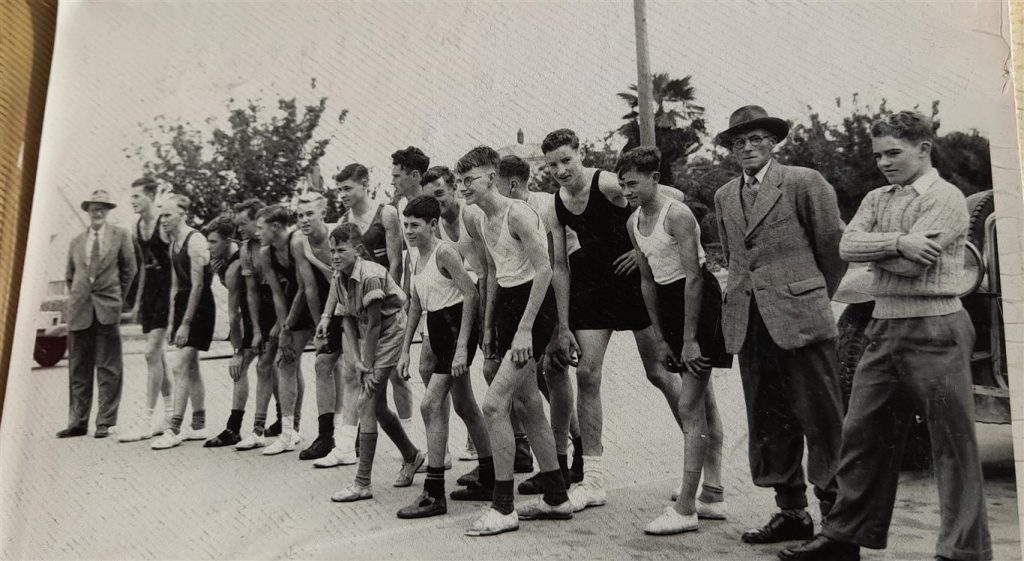
The 17-year-old moved to Ashburton from Barrhill to work at Tuckers Hardware building supplies.
‘‘The simple fact is I couldn’t afford it. It didn’t cost much but wages in 1951 were pretty small and I was boarding in town.
‘‘Jobs were hard to get, if you didn’t take a job there was someone else standing at the door waiting (to take it), and you didn’t ask about money like you do today.’’
Gordon’s mother had arranged board for him in Ashburton without knowing the cost.
‘‘I got my first pay – 25 shillings for 40 hours – the landlady wanted 30. I had to ask the boss for a rise or else leave and find something else.
‘‘So they paid me 32 and six pence for the first six months and I had two and six pence a week to live on,’’ he said.
‘‘I couldn’t do much.’’
Gordon didn’t own a bike, nor a car, and had to walk everywhere.
He ran, and visited family and friends.
He joined the club in 1953.
By then it was quite a popular club they would have road races in town.
He recalls running alongside the likes of Graham Nelson, Peter Watson, Robin Gilchrist, Gerard McKendry. And later with top runners such as Pat Sideon (Dunedin), Peter Snell and Arthur Lydiard. He also met a very young future-Olympian Richard ‘Dick’ Tayler who was competed at Winchmore.
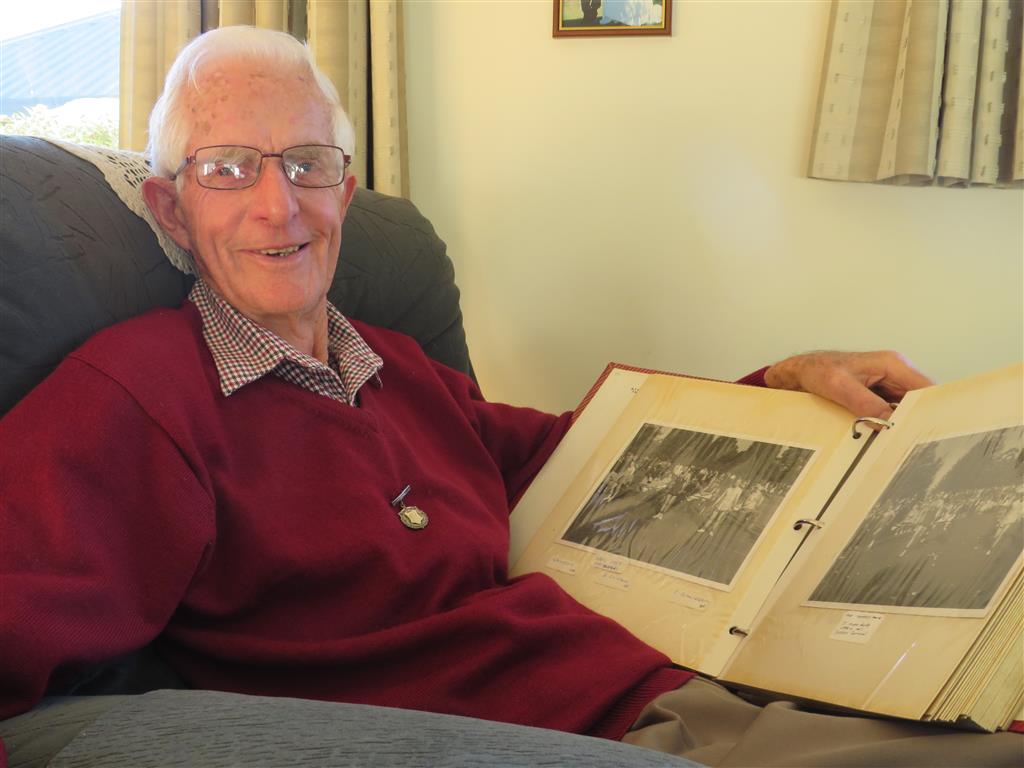
He took part in the Mid Canterbury leg of the Southland Centennial nationwide torch relay in 1956, and most of his running has been in Canterbury.
Gordon recalls his top three placing in the South Canterbury Harriers, Temuka to Timaru road race in 1957.
He was one of 140 runners lined up to run in the open handicap event and he narrowly missed out on second place by mere inches.
‘‘I haven’t been a record breaker,’’ he said.
‘‘One of my nicest achievements third place in the Temuka to Timaru road race.
‘‘I think I’m the only member of the club that has had a placing in that to my knowledge,’’ he said.
‘‘I got beat by about two inches for second.’’
‘‘The hills at the end used to catch us out, because we were flat country boys.’’
Harriers members generally train once a week, and run during the week to keep up their fitness.
But Gordon admits to being ‘‘a lazy trainer’’, preferring to hit it out on the table tennis three nights a week in his youth instead of running.
He was a ‘‘reasonable’’ table tennis player and was at the public meeting to discuss buying the Ford garage building on Tancred Street, which would go on to become the Sports Hall.
‘‘They were the hardest working people you would ever find,’’ he said of those on the committee working to fundraise to buy the building from owner Bert Holmes.
‘‘Their theory was to raise money you had to give value for money,’’ he said.
They did anything and everything needed to raise money from selling pine cones, bottle drives to street collections and marshalling car parks at shows, he said.
They also run a novelty Queen’s Carnival pageant sulky race where three sportsmen – pulled an entrant in the carnival in a sulky. Gordon, along with runner Eric Jamieson and hockey player Colin Hampton took up the challenge.
Gordon said it was the hardest race he ever ran.
It was 440metres around the Ashburton Domain oval and he ran in his cricket shoes to help grip the grass.
‘‘Running is one thing but when you’re pulling a sulky with you’re arms holding on to a shard, you’ve got no arm movement.
‘‘You couldn’t let go or else the girl in the cart would land on her back on the ground.
‘‘I didn’t know until later that I had actually won it because you couldn’t look around and you couldn’t do anything, your arms were tired.’’
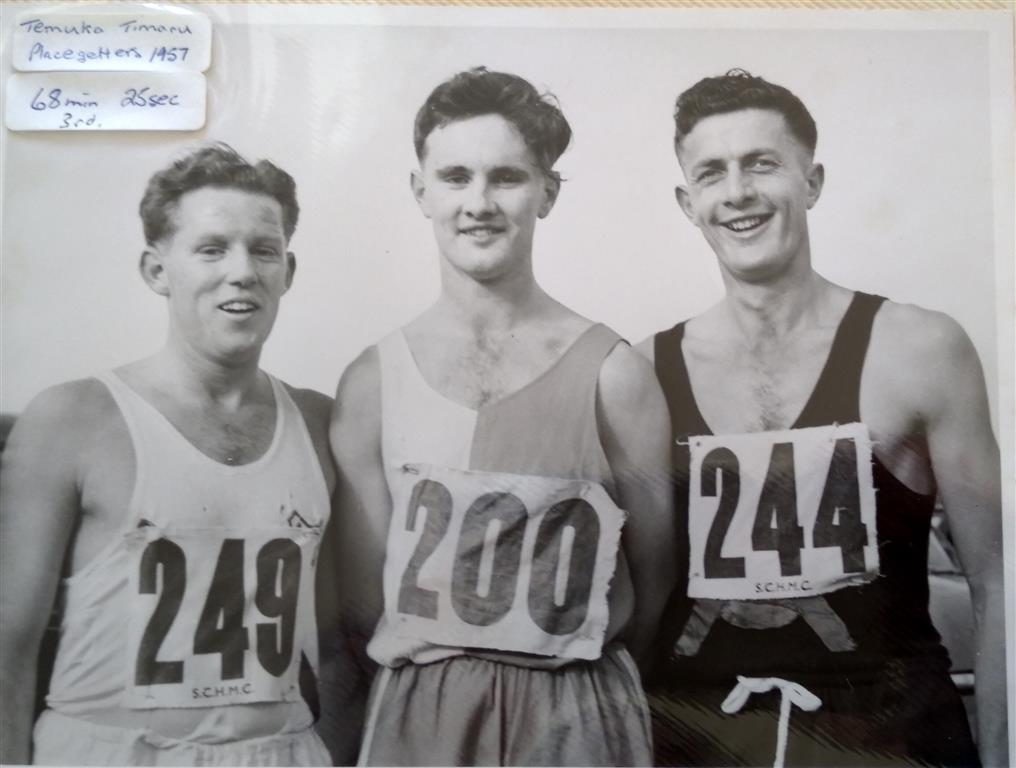
He said the Harriers club, which did not have women members until later years, still meet on Saturdays and cover set distances for different races, or just go out for a run or walk.
However it is a different scene today from those early years when runners lined up on the road and ran – often without marshalls along the route.
There were not the trucks or buses on the roads then because everything went by rail, Gordon said.
‘‘It’s very limited today, you can’t use the roads like we used to.’’
‘‘All road races are wiped out; (due to) regulations.
‘‘We had some great races – Temuka to Timaru, Timaru to Waimate relay and vice versa each year … Kaiapoi to Christchurch, and the Akaroa relay, it finished last year. It’s traffic congestion and safety.’’
Gordon has kept a personal log of the club’s history over the years and those in office roles such as patron, president, secretary and treasurer.
He has been club patron since 1984; the late-John McGrath was a co-patron from 2017 to 2019.
He was president from 1962 to 1969, and secretary/treasurer for several years.
As a commemoration of Gordon’s 70 year history this year a new trophy has been introduced; the Gordon Clinton Sealed Handicap Trophy. It’s a sealed mixed handicap race.
The inaugural winner of the 5km distance was club president Gary Whiting with a time of 28.40.
It will be now be an annual trophy for the club to present, Gordon said.

